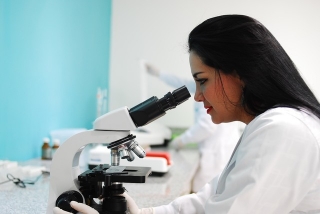Researchers Discover How a Stem Cell Becomes a T Cell
T cells are perhaps the most important immune cells in the body, but nobody knew exactly how they were produced. Researchers at Leiden University Medical Centre (LUMC) have now been the first to map out the complete molecular pathway from stem cell to T cell in mice. Their findings are being published in the scientific journal Science Advances.
In fact, says research leader Prof. Frank Staal, it was pretty weird that we didn’t know how a stem cell becomes a T cell. “We already knew exactly how that works for other immune cells, like B cells or myeloid cells. In the case of T cells it was known which factors play a role, but not exactly how they work and interact. We’ve been wanting to clarify that for years.” New techniques for analysing cells in small quantities – and what Prof. Staal calls the “golden hands” of PhD candidate Laura Garcia-Perez – have now produced an answer to that question.
Divide up the work
Experiments on mice have shown that three “transcription factors” jointly force the stem cell in the direction of the T cell. Transcription factors are proteins that regulate the reading of DNA. “T cells develop in the thymus, an organ located above the heart. There, the stem cells are exposed to signals that activate these transcription factors. It now turns out that the first factor puts the other two to work. They then divide up the work: one suppresses the tendency of the stem cell to become a different immune cell and the other one stimulates the stem cell to become a T cell. That way, the stem cell can only go one way: towards becoming a T cell”, says Prof. Staal.
He explains that the experiments to clarify this were technically incredibly complicated and went beyond immunology. His team therefore collaborated with colleagues from the Human Genetics department. “Lucia Daxinger’s group know a great deal about epigenetics, for example, which we at the Immunology department are less at home with. This result really is an example of fantastic multidisciplinary collaboration.”
Curiosity
Clarifying the route from stem cell to T cell is first of all a great way of satisfying scientific curiosity. But Prof. Staal thinks it can ultimately also have implications for treatment. “We now know what it’s like in mice, but of course we’d like to know if it works the same way in humans. We could then use that knowledge, for example, to stimulate the immune system of elderly people. As you get older, your thymus doesn’t work as well, and your immune system becomes less effective. It’s still a distant prospect, but it would be great if we could boost the way the thymus works in elderly people.”
You can find more information in the article Functional definition of a transcription factor hierarchy regulating T cell lineage commitment in Science Advances.
Source: LUMC

